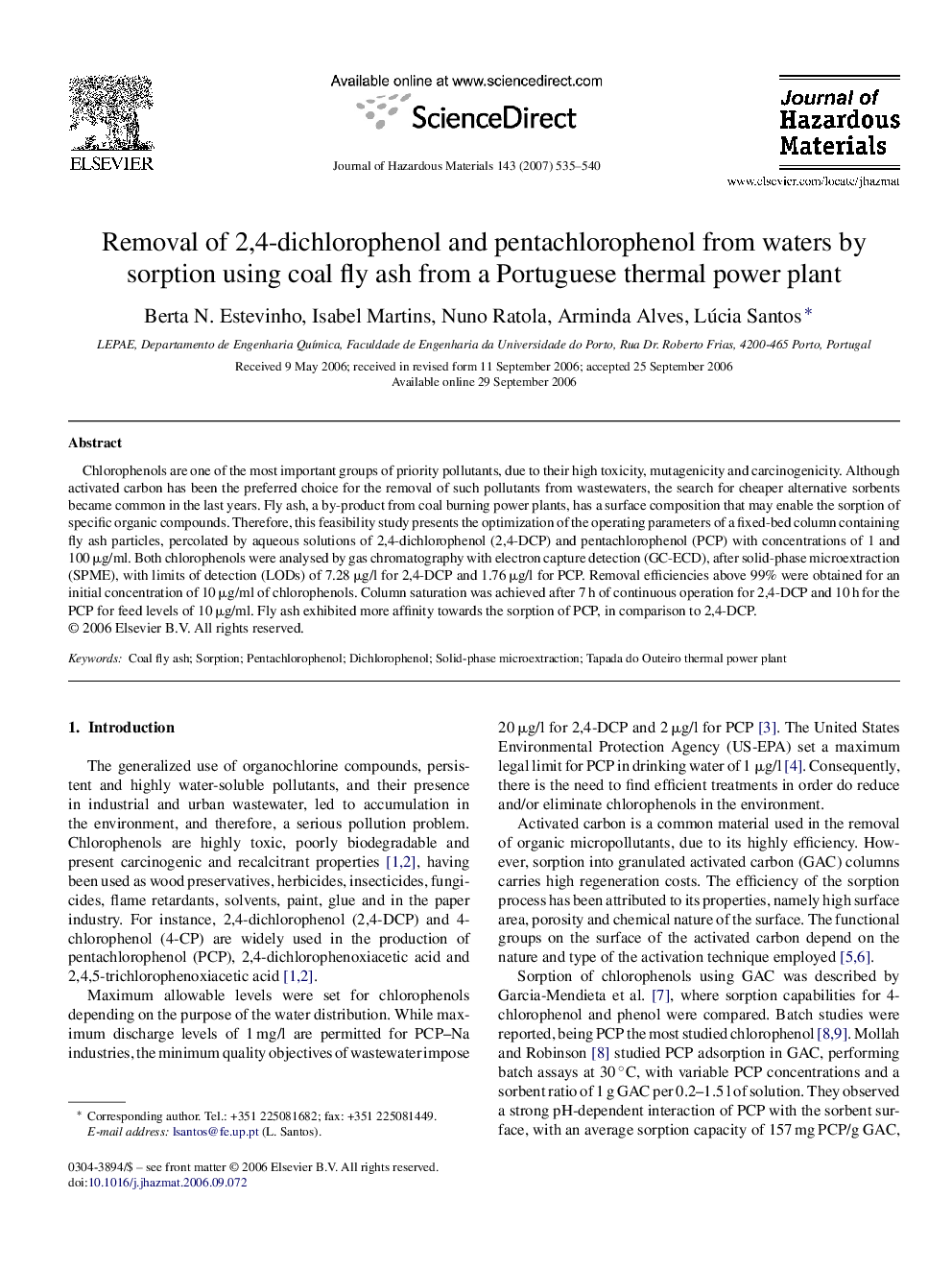| Article ID | Journal | Published Year | Pages | File Type |
|---|---|---|---|---|
| 584756 | Journal of Hazardous Materials | 2007 | 6 Pages |
Abstract
Chlorophenols are one of the most important groups of priority pollutants, due to their high toxicity, mutagenicity and carcinogenicity. Although activated carbon has been the preferred choice for the removal of such pollutants from wastewaters, the search for cheaper alternative sorbents became common in the last years. Fly ash, a by-product from coal burning power plants, has a surface composition that may enable the sorption of specific organic compounds. Therefore, this feasibility study presents the optimization of the operating parameters of a fixed-bed column containing fly ash particles, percolated by aqueous solutions of 2,4-dichlorophenol (2,4-DCP) and pentachlorophenol (PCP) with concentrations of 1 and 100 μg/ml. Both chlorophenols were analysed by gas chromatography with electron capture detection (GC-ECD), after solid-phase microextraction (SPME), with limits of detection (LODs) of 7.28 μg/l for 2,4-DCP and 1.76 μg/l for PCP. Removal efficiencies above 99% were obtained for an initial concentration of 10 μg/ml of chlorophenols. Column saturation was achieved after 7 h of continuous operation for 2,4-DCP and 10 h for the PCP for feed levels of 10 μg/ml. Fly ash exhibited more affinity towards the sorption of PCP, in comparison to 2,4-DCP.
Related Topics
Physical Sciences and Engineering
Chemical Engineering
Chemical Health and Safety
Authors
Berta N. Estevinho, Isabel Martins, Nuno Ratola, Arminda Alves, Lúcia Santos,
